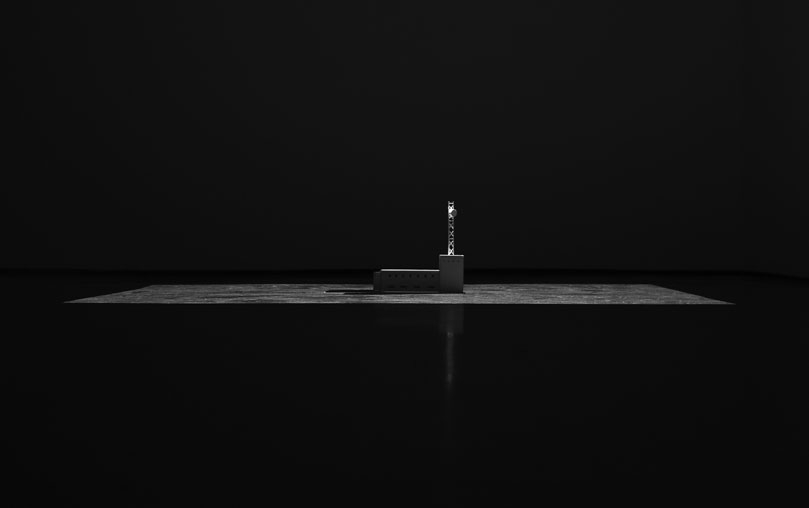Standing in an exhibition and waiting for something to happen can be nerve-wracking. This is not to say that art needs to be instantly gratifying, but walking into the dark space that houses Jan Tichy’s first New York show is jarring. The venue, a commercial space on the ground floor of a condominium on the Lower East Side, is finished with cement floors, white paint and columns throughout, but has the ghostly quality, so rare in New York City, of a place vacant of human activity.
And then the site-specific Installation No. 18 (2013) sets off. The room is gradually lit by a number of projectors placed across it. The light lingers on corners, slowly climbs a column, draws attention to the texture of the walls. The eeriness of the space is not erased by the brightness, but if one gives in to the white light, the space can feel comfortable, the effect entrancing. The light is determined by an algorithm that reacts to the architecture, but still seems to have a life and velocity of its own.
This slick presentation contrasts with other works on view. In 100 RAW (2009), 100 black-and-white photographs of an urban landscape show continuously on a monitor as raw data files, with no greyscale to soften the imagery. Accompanied by white noise – actually the ‘sound’ of the image files when opened with audio software – the pictures convey a fateful failure of technology, where the images produced cannot represent anything that is ‘really’ there; in their rough state, they echo the fear or disquietude of the cityscapes.
A similarly forbidding sound appears in Installation No. 6 (Tubes) (2008), where 200 paper tubes are placed atop an analogue television monitor playing a black-and-white animation. As the light moves across the television, illuminating the tubes to look like a small paper city, a sense of poetics becomes interchangeable with the lightshow’s ominous pace, which pushes the viewer away from the piece. As with 100 RAW, the disrepair or disuse of a familiar technology becomes a key aspect of the work and our interaction with it.
And the politics of the show’s title? It is in Tichy’s subjects, and his reserved handling of them makes them all the more resonant. For example, 1391 (2007) is a 40-centimetre-tall paper model of a secret military base in Israel, displayed alongside what look like architectural drawings of the model. With its small scale and scrupulous detail, the presence of the classified building in model form is disturbing as is. What makes it even more poignant is that it is placed on the dark floor and illuminated from above by a rectangle of white light. Bringing something to light can be as tormenting as being kept in the dark.
This article was first published in the December 2013 issue.
